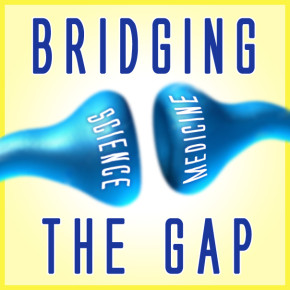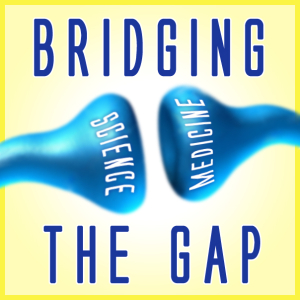 Including athletic agility, intelligence and social behavior, many human traits are thought to exist along a continuum. Often, dynamics in skills and personality are used to distinguish one individual from the next. But when aspects of social behavior exist in such a range, it challenges scientists and behavioral specialists to identify the presence of a cognitive impairment or deficit. What factors should be used to identify a mental illness among the cohort of traits that make us unique from one another as humans? How should acute responses from life events be distinguished from chronic challenges that require intervention? These questions manifest the reality that even disorders themselves exist in a range, and in the case of autism, are known as autism spectrum disorders (ASD). In order to better understand current challenges in the field of mental health, an exploration of some of the scientific research that has been done in the field of ASD will be used here as a model.
Including athletic agility, intelligence and social behavior, many human traits are thought to exist along a continuum. Often, dynamics in skills and personality are used to distinguish one individual from the next. But when aspects of social behavior exist in such a range, it challenges scientists and behavioral specialists to identify the presence of a cognitive impairment or deficit. What factors should be used to identify a mental illness among the cohort of traits that make us unique from one another as humans? How should acute responses from life events be distinguished from chronic challenges that require intervention? These questions manifest the reality that even disorders themselves exist in a range, and in the case of autism, are known as autism spectrum disorders (ASD). In order to better understand current challenges in the field of mental health, an exploration of some of the scientific research that has been done in the field of ASD will be used here as a model.
Four characteristics have been associated with autism: social impairment, abnormal development in the application of language, repetitive and ritualized behaviors, and a narrow range of interests. In order to better understand them, these behavioral outputs lead to structural studies of relevant brain regions. In a study at the University of California, Los Angeles (UCLA), total Purkinje cell counts, which have previously been found to be involved in cerebellar growth, were compared between human subjects with autism and a control group. Cerebellar circuitry involvement in regions of the cortex with roles in cognition and judgment has been previously found and make the cerebellum a widely studied candidate for implications in ASD. The group at UCLA found that there were much lower Purkinje cell counts in the cerebellar hemispheres of subjects with autism than those in the control. Because these studies were done in post-mortem subjects, however, using Purkinje cell numbers in the cerebellum as a possible tool for diagnoses is impractical, as an internal review board might look poorly upon bilateral lobotomies on people to diagnose them with an incurable illness.
Nonetheless, the extent of “nature versus nurture” is an ongoing question in the realm of psychology, and an understanding of the influence of genetics can help us better comprehend nature’s role in determining our personalities. In mouse models, six X-chromosome linked genes have been associated with autism, including Fragile X mental retardation gene (FMR-1). Knocking out FMR-1 in mice produces mice with altered social behaviors, including decreased social behaviors as well as reduced fear conditioning, as demonstrated in studies by Bernardet, Hays and Peier. Mutations in one of these six genes, the methyl-CpG-binding protein type 2 gene (MECP2), have not only been associated with behavioral aspects of ASD, but have also been implicated with producing an immunodeficient state in mouse models. Specifically, MECP2 duplication has been found to reduce secretion of interferon-γ. This study, by a group at Baylor College of Medicine, identifies a relationship between autism and genetics in order to better understand how the genes we inherit from our parents can affect our personalities.
The relationship between the immune system and ASD reappears in a study conducted on rodents whose immune systems were activated during pregnancy. Specifically, one study found that on embryonic day 9.5, maternal immune activation produced offspring that exhibited decreased brain sizes at birth as well as decreased sociability during their lifetimes. Similar to the Purkinje cell count study done on human subjects at UCLA, this study on rodent models also reports decreased numbers of Purkinje cells in the brain. By relating maternal immune activation with offspring phenotype, this study provides insight on the importance of preventing maternal infection in order to protect healthy brain development in the offspring. Understanding the relationships that exist between the immune system and ASD characteristics could provide insight on the pathophysiology underlying the behavioral phenotypes associated with autism.
Humans are anatomically very similar to one another when considered only in the context of structural makeup. This is what allows therapies to be applied more or less universally, as many illnesses can be treated with the same surgery or the same drug in different people. But our range of personalities and behaviors are what truly set us apart from one another—which subsequently make current models of assessing autism and other behavior-related disorders insufficient as diagnosing criteria that comprise a range of outputs in the human population. By supplementing our understanding of behavior by studying structural and genetic differences that exist in those experiencing a disorder diagnosed by personality and behavior, scientific research can perhaps provide a more quantifiable distinction between what constitutes personality and what crosses the line into the realm of disorder. And by furthering knowledge on the neural circuitry and genetics underlying these disorders, cellular scientific research can be used to provide more targeted and individualized interventions to improve the quality of life of people experiencing ASD and other disorders with similar diagnostic challenges.
Bridging the Gap focuses on the relationship between basic research and medicine to develop an appreciation for the science that underlies the foundations of modern medicine.



